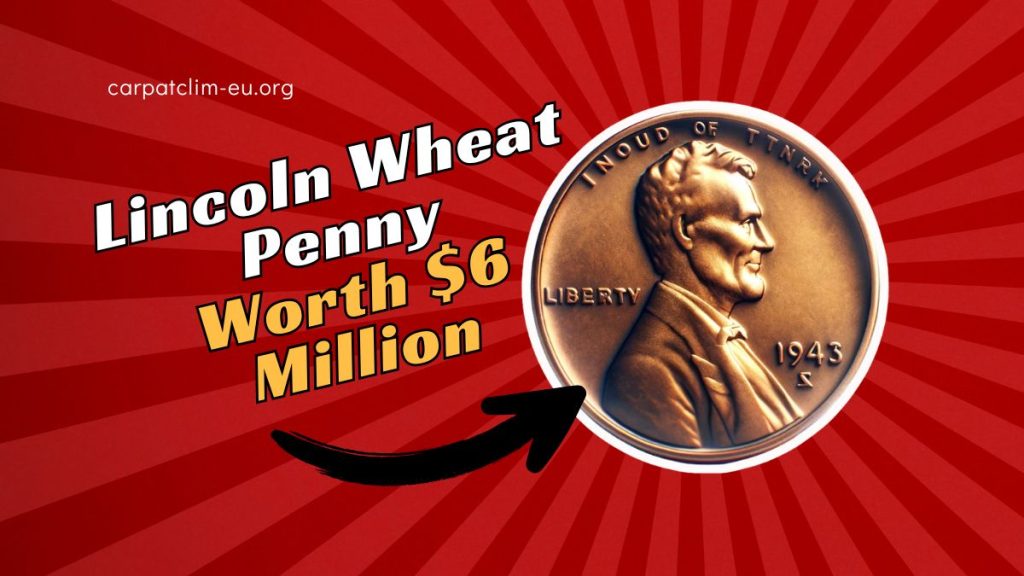The Lincoln Wheat Penny, minted from 1909 to 1958, is a cherished piece of American numismatic history.
While most of these pennies are valued at their face value of one cent, certain rare varieties have commanded astonishing prices at auctions, with some reaching up to $6 million.
This article delves into the essential features that collectors should examine to identify these exceptionally valuable coins.
Understanding the Lincoln Wheat Penny
Introduced in 1909 to commemorate Abraham Lincoln’s 100th birthday, the Lincoln Wheat Penny features:
- Obverse (Front): A portrait of Abraham Lincoln, designed by Victor David Brenner.
- Reverse (Back): Two stalks of wheat framing the words “ONE CENT” and “UNITED STATES OF AMERICA.”
The coin’s composition was primarily 95% copper and 5% tin and zinc until 1943, when the U.S. Mint switched to zinc-coated steel to conserve copper during World War II.
Key Features to Identify Valuable Lincoln Wheat Pennies
Collectors seeking high-value Lincoln Wheat Pennies should focus on the following characteristics:
1. Year of Minting: Certain years are particularly rare and valuable due to low mintage or unique errors.YearNotable Features1909-S VDBFeatures designer’s initials “VDB” on the reverse; only 484,000 minted.1914-DLow mintage of 1,193,000; highly sought after by collectors.
1922 No DMissing mint mark on a coin struck at the Denver Mint; extremely rare.1943 CopperStruck on copper planchets instead of steel; only a few known examples.1955 Double DieExhibits a noticeable doubling of the date and inscriptions; rare and valuable.
2. Mint Mark: The mint mark indicates where the coin was produced:
- No Mint Mark: Coins minted in Philadelphia
- D: Denver Mint
- S: San Francisco Mint.
3. Condition and Grading: The coin’s condition significantly impacts its value. Coins are graded on a scale from 1 to 70, with 70 being perfect. Higher-grade coins, especially those in mint state, are more valuable.
4. Minting Errors: Coins with minting errors are highly prized. Examples include:
- Double Dies: Features doubled images due to die misalignment.
- Off-Center Strikes: Design elements are misaligned due to improper planchet placement.
- Wrong Planchet Errors: Coins struck on incorrect metal types.
Identifying the $6 Million Lincoln Wheat Penny
The coin that fetched $6 million is a 1943-S bronze Lincoln Wheat Penny. During World War II, the U.S. Mint switched to zinc-coated steel planchets to conserve copper.
However, some bronze planchets from 1942 remained and were mistakenly used in 1943, resulting in a few bronze pennies. Only a handful of these 1943 bronze pennies exist, making them extremely rare and valuable.
How to Identify a 1943-S Bronze Lincoln Wheat Penny
To identify this rare coin:
- Year: Check for the 1943 date.
- Mint Mark: Look for the “S” mint mark beneath the date.
- Material: Use a magnet to test the coin. Bronze coins are non-magnetic, while steel coins are magnetic.
- Weight: A bronze penny weighs approximately 3.11 grams, whereas a steel penny weighs about 2.7 grams.
Preserving and Valuing Your Coin
If you believe you have a valuable Lincoln Wheat Penny:
- Handle with Care: Use gloves to prevent oils from your skin from damaging the coin.
- Storage: Keep the coin in a protective holder, such as a 2×2 holder or capsule.
- Authentication: Consult a professional numismatist or submit the coin to a reputable grading service for authentication and grading.
While most Lincoln Wheat Pennies are of modest value, certain rare varieties can be worth substantial amounts. By understanding the key features and characteristics of these coins, collectors can better identify and appreciate the treasures that may be hidden in their collections.
FAQs
What makes a Lincoln Wheat Penny valuable?
The value is determined by factors such as rarity, minting errors, low mintage years, and the coin’s condition.
How can I tell if my 1943 penny is bronze or steel?
Use a magnet; steel pennies are magnetic, while bronze pennies are not.
What is the most valuable Lincoln Wheat Penny?
The 1943-S bronze Lincoln Wheat Penny is among the most valuable, with some selling for up to $6 million.

